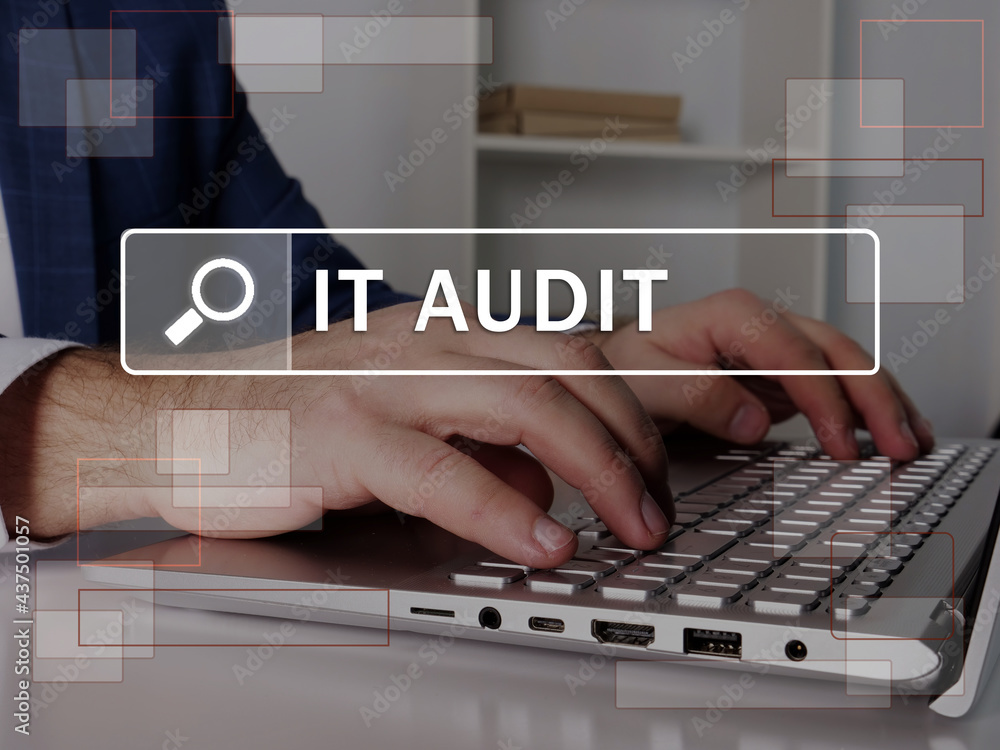What is an IT Audit?
Think of an IT Audit as a SWOT Analysis of your entire technology infrastructure. It’s a process of reviewing what data, systems & hardware you have, where it is stored, how it is protected, & how your business can improve its processes. Conducting IT audits can provide a lot of benefits from lowering costs, increasing resilience & facilitating growth.
Information Technology Audits not only analyze the data, systems & hardware but they also cover employee training, policy, procedure, plans to expand, & any potential gaps in the ecosystem. Ultimately, the goal of an audit is to improve business continuity.
Here we break down our
10 Question Checklist for Performing an IT Audit.

1. What is the objective of your IT Audit?
The ultimate objective of an IT audit is to ensure the integrity and protection of organizational IT assets and ensure they align with the business goals and objectives. One of the first things you’ll want to do is conduct a GAP analysis, this will help you determine where the company is falling short in their systems. The report generated from GAP will identify where your organization is to help navigate a plan forward to close those gaps. Another benefit of completing IT Audits is that it provides a framework for improving the company over time, giving you valuable insights to the performance of your systems & the people that manage them. With this knowledge, business owners can see what technology & software needs to be purchased as well as what additional training or policy changes need to happen. Although your goals for an IT Audit are specific for your business, the main objective is to discover the vulnerabilities within your IT ecosystem & develop a strategy for improvement.
2. Do you need to outsource the Audit?
In my opinion, I believe you should outsource about 50% of the auditing to an outside company. Outsourcing your IT audit to a 3rd party vendor has advantages like a “fresh pair of eyes”, hiring subject matter experts so your organization can focus on its business core functions and ultimately outsourcing should save you time and money. There are many components of a full-scope IT Audit, all of which vary in depth & detail by the size of your company. Factoring in the amount of data, software subscriptions, number of employees, type of data & if there are regulations, goals of the audit, & many more components all take time to review. Hiring a 3rd party vendor to assist with your IT Audit could save your organization a significant amount of time & resources. 3rd party vendors often have the tools & experience to perform these analyses quickly and proficiently. One positive take away from consistently performing IT Audits is you will end up developing better systems & processes. While outsourcing may cause additional capital and increase operational risk, ultimately the audit saves you significant time to focus on the rest of your business. Additionally, cyber experts are usually more up-to-date on the security threats to look out for & how to prevent malicious attacks on your digital ecosystem.
If you have no idea where to start on performing an IT Audit, you can Schedule a Free Consultation to chat about your business & how to get started.
3. How often will you Audit?
While established businesses usually have a set schedule for performing IT Audits, newer businesses may decide to perform their very first one today. Some businesses perform the analysis every month while others are every year, we wouldn’t recommend waiting any longer in between the audits though! While there is no right answer on how often you should perform your audits, certain industries or geographic locations may require a certain level of auditing every year. As the risks of cyber attacks online continue to rise, performing IT Audits more consistently & more in-depth will become crucial to the business continuing to operate during an adverse event. We at OQP Solutions recommend performing a full-scope IT Audit every year as well as smaller & detailed specific audits every quarter. We also recommend companies implement a checks & balances plan to ensure systems are working properly & people are notified when issues arise. In the end, the more consistent & in-depth your IT Audit is, the more likely you’ll recover from issues quickly & less likely to have issues in the first place.
4. What systems need to be Audited?
The short answer is: any Information system that the businesses uses to operate, from mobile devices to the cloud. Even if you logged into a software once, that Username & Password should be stored somewhere safe so add it to your IT Audit. That said, these are more “set it & forget it” items compared to auditing your Anti-virus & Malware Protection, your Quickbooks, the email client & security system, or any other item you use regularly & is vital to your business. Bigger & more important items like these are functions of your business that should be audited regularly for discrepancies & to ensure that everything is operating smoothly. Ultimately, the items included in an IT Audit will be specific to your business & should be all inclusive of your entire company.
5. Who is involved in the IT Audit?
This can vary based on a few different factors such as company size, type of audit, is the audit known or a surprise. Some key players involved in an IT audit would be a certified auditor, system engineers, pen testers, policy and compliance analyst, business analyst and stakeholders. Pretty easy answer if you’re a sole operator in your business but what if you have 500+ employees? Truth is, everyone within the company is part of an IT Audit in some regards as they all use the various systems & software throughout the company. The human aspect of your business is an integral part in how you conduct business & is actually the biggest risk in terms of Cyber Security. From lack of training & policies to happy little accidents, people’s actions can have an adverse affect on your business if you’re not prepared to handle issues. While an understanding of the day-to-day workflow of your employees is important, insights from your HR department & guidance from your IT team are often the most valuable. When consulting these team members for IT Audits, ask them about the nuances they encounter regularly, any issues that haven’t been resolved, & how they believe the various business functions can be improved. This information will provide valuable insights into all of the components that need to be evaluated.
6. What policies & procedures impact the Audit?
Even if you are a sole operator, you probably have some processes in place for managing your customers, to-do lists, etc. These processes typically require software & may require certain steps be taken to protect the data based on local, state, & federal laws (think HIPAA). If you have employees, you probably have some internal policies that should be considered such as Non-Disclosure Agreements (NDA), software & internet use policies, and even Cyber Security Training & Awareness programs. During your IT Audit, it’s important to look at these policies & procedures for gaps in security & ways to improve the efficiencies.
To simplify the process to its most basic form:
1) Audit the company
2) Improve Policies/Procedures/Systems
3) Repeat!
7. How will you document the Audit Results?
Audit results are usually documented as the audit is being conducted and a report is generated from the audit. Security professionals usually use a tracking tool while conducting audits that will help them accurately keep track of data recorded. At the end of the audit all the data collected is compiled together and a security professional develops a report to help your organization understand your strengths, weaknesses and areas of improvement. More often than not, the auditor will provide a recommended course of action forward. How you document the IT Audit will vary by industry, company size, & what factors are all included. This is where Cyber Security Management Software could be a viable option to assist in managing the results & publishing them. At the very least, a Google Doc for the summary & Google Sheets for the data is a quick & easy way to track changes over time. Utilizing Google’s tools can make the process of compiling all of the information between departments more efficient as various team members can work together to complete the report. By the time you have completed a couple of IT Audits, you should have a process for collecting the information & compiling it into a report that makes sense.
8. Who needs the IT Audit Results?
The full report will be delivered to the executive suite and stakeholders for review. After review a redacted version of the report is usually shared amongst all department managers and the IT team. This is a crucial aspect of the IT Audit because it’s passing the findings & the next steps to the people that will implement the changes. Depending on the results, you may also have to involve individual employees across the entire company for additional procedure changes or additional Security Awareness Training. One thing you can do as a business owner to set your employees up for success is to publish the internal report to the entire company in a presentation. This allows all employees to learn more about the inner workings of the company & can act as a teaching moment outside of regular employee training. In short, anyone who works for you should be able to learn better Cyber Hygiene practices & workflow procedures from the IT Audit.
9. What are the next steps Post-Audit?
After completing the IT Audit & publishing the results to the team, the next step is to develop POAMs (Plan Of Action and Milestones). POAMs help an organization identify a plan to remediate tasks. POAMs detail resources required to accomplish the elements of the plan. Does a company policy need to change? Do we need to purchase a different Anti-Virus & Malware Protection software? Does Jim from Accounting need additional training for email security? Spend some time reviewing the key takeaways with your managers & IT team so you can strategize the best approach to correcting the issues & making the improvements. Add a follow-up in 3-6 months (or sooner if a critical issue) to ensure that the changes to policy & procedure are being completed & implemented fully.
10. How will you analyze IT Audit Results over time?
Analyzing your IT audit report over time will require you to develop POAMs. POAMs will help your organization strategically close gaps within your organization over time. Developing specific tasks, assigning responsibility to personnel will ensure accountability and ensure proper tracking of gaps. One of the final pieces of an IT Audit is to evaluate the quantitative and qualitative risk impacts associated with underperformance or malicious events. Knowing how bad something can impact your infrastructure or how much it will cost your business tells you exactly how much having a quality system is worth.


Start Your IT Audit Today
While it may seem like a daunting task, completing ongoing IT Audits will have an impact on the success of your business & on reducing your Cyber Security Risks to acceptable levels. The important thing to remember is that the full scope of your business’s IT systems can be documented over time. Starting to write down all of the systems, people, processes, softwares, & so on will help to catalog them so you can build a strategy from there. As a business owner, you can improve your IT systems & company procedures over time but you may not be able to recover if you don’t address them at all before experiencing a malicious event.
